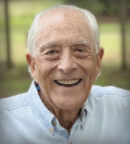I’ve been blessed to have remained healthy for most of my life. In fact, I can’t remember ever spending a night in the hospital until I was diagnosed with pancreatic cancer, at age 86, in the summer of 2024. And even then, the symptoms that drove me to seek care in the emergency room of my local hospital, including some yellowing of my skin and eyes and a bit of weight loss, didn’t initially seem so worrisome. It wasn’t until a series of blood and urine tests showed that my bilirubin levels were five times higher than normal that I became concerned. When additional imaging scans spotted a tumor at the head of my pancreas, I knew I was likely in serious trouble.
Over the years, I’ve lost a brother-in-law and several friends to pancreatic cancer, and I was scared. To complicate the situation, one of the imaging scans also found that I had an abdominal aortic aneurysm. When I finally met with a surgeon, he said that although he didn’t have a definitive diagnosis of pancreatic cancer, because he was unable to perform a biopsy of the tumor on my pancreas, the results of a positron-emission tomography (PET) and a computed tomography scan left no doubt in his mind about a diagnosis. “I’m sure you have pancreatic cancer,” he said.

“I’m living proof that age is just a number. My life experience has taught me the importance of never giving up in the face of adversity—no matter your age.”— THAD LOWREY
Tweet this quote
He recommended that I undergo a pancreaticoduodenectomy, commonly known as the Whipple procedure, as soon as possible. After doing my own research on the cancer and potential treatments, I agreed that his suggestion would probably give me the best chance at a cure.
Although at that point, the cancer hadn’t been staged, I knew that even if the tumor was localized—the best-case scenario—I was still looking at a 5-year relative survival rate of 44%.1 And that number dropped to just 3% if the cancer had already metastasized.1 I also knew that regardless of the stage of the cancer, I was going to need a big support system to beat these odds and improve my chance of survival.
Surviving Cancer Takes a Village of Supporters
At the time of the diagnosis, my wife, Bobbie, and I were living in North Carolina and decided to relocate back to Florida to be closer to our three adult children and a community of friends we had made when I hosted a radio show there called Open Line. We had agreed that whatever my prognosis, we were going to need a support system to help us through this journey. It turns out that it does take a village to get through cancer. It’s also likely true that making the move back to Florida was instrumental in saving my life.
After having my medical records transferred to Moffitt Cancer Center in Tampa, I met with a surgical oncologist for more than an hour and was immediately put at ease. The sense of confidence she showed that the cancer was treatable without giving me false hope of a cure helped ease my fear and prepared me for what was ahead.
The surgical oncologist agreed that the best treatment course was the Whipple procedure. But before we could take care of the cancer, she said, I would need endovascular surgery to repair the abdominal aortic aneurysm. A week after that surgery, I was well enough to undergo the Whipple operation. Fortunately, the cancer was confined to the pancreas. To help prevent disease recurrence, I received 13 rounds of adjuvant chemotherapy and oral capecitabine, and my latest PET scan showed no sign of disease.
Living With Realistic Hope
I’m an optimistic person and a realist. Just because I’m 87 doesn’t mean I can’t have another 10 more high-quality years, and that’s my goal. I’m grateful that I didn’t have to go through this experience alone. Cancer is a family affair, and I know I wouldn’t be here if it weren’t for Bobbie, our children, and our friends. I’m also grateful to my surgical oncologist and my whole oncology team for instilling in me the confidence to go through this cancer journey and to come out the other side.
Today, I have an even greater appreciation for life than I did before my cancer diagnosis, and I hope to use my voice to help others going through a similar health difficulty.
I’m living proof that age is just a number. My life experience has taught me the importance of never giving up in the face of adversity—no matter your age. At nearly 90, I’m still looking forward to the possibilities of tomorrow.
REFERENCE
1. American Cancer Society: Survival rates for pancreatic cancer. Available at www.cancer.org/cancer/types/pancreatic-cancer/detection-diagnosis-staging/survival-rates.html. Accessed June 12, 2025.
Mr. Lowrey, 87, lives in New Port Richey, Florida, with his wife, Bobbie.
Editor’s Note: Columns in the Patient’s Corner are based solely on information The ASCO Post received from patients and should be considered anecdotal.

